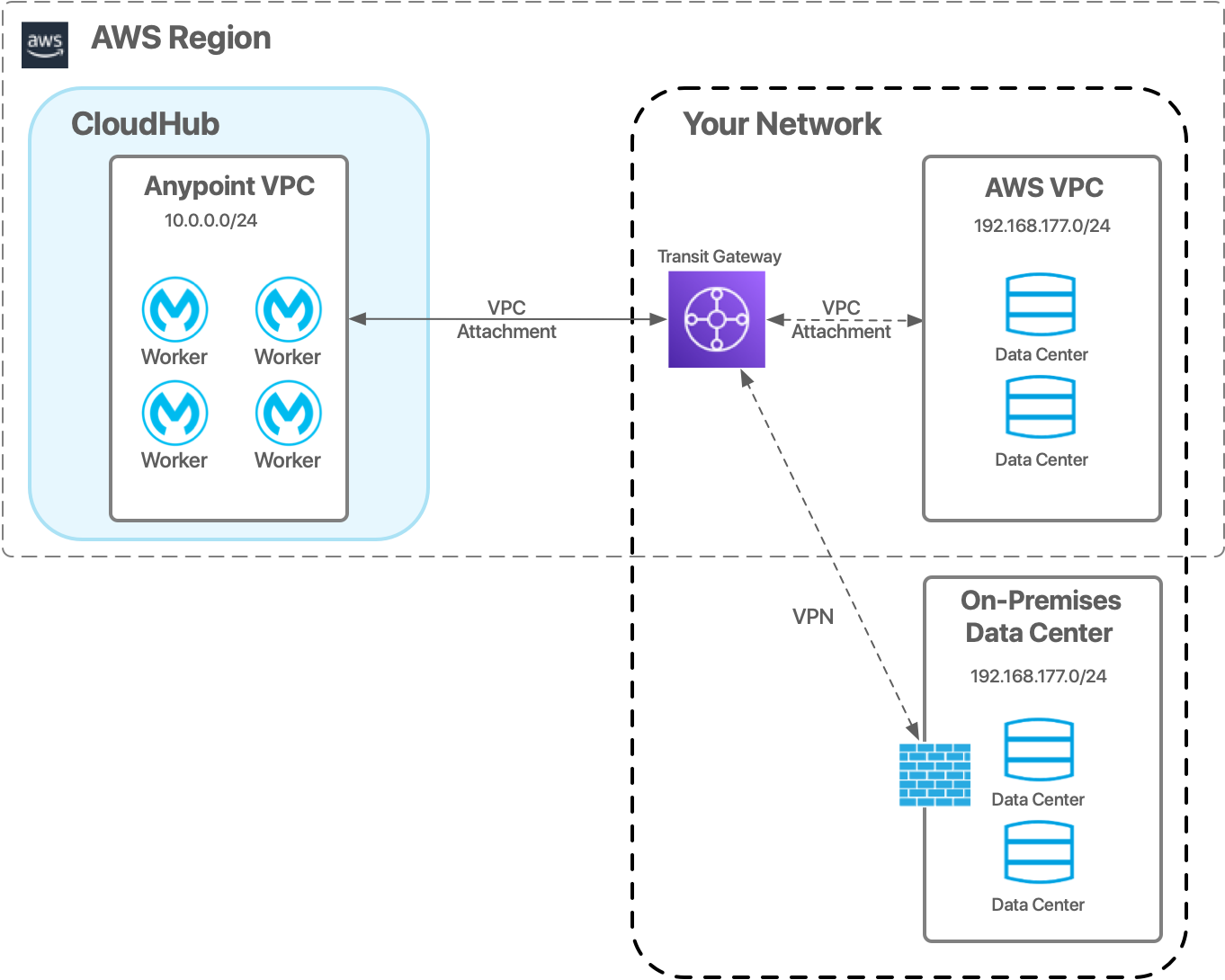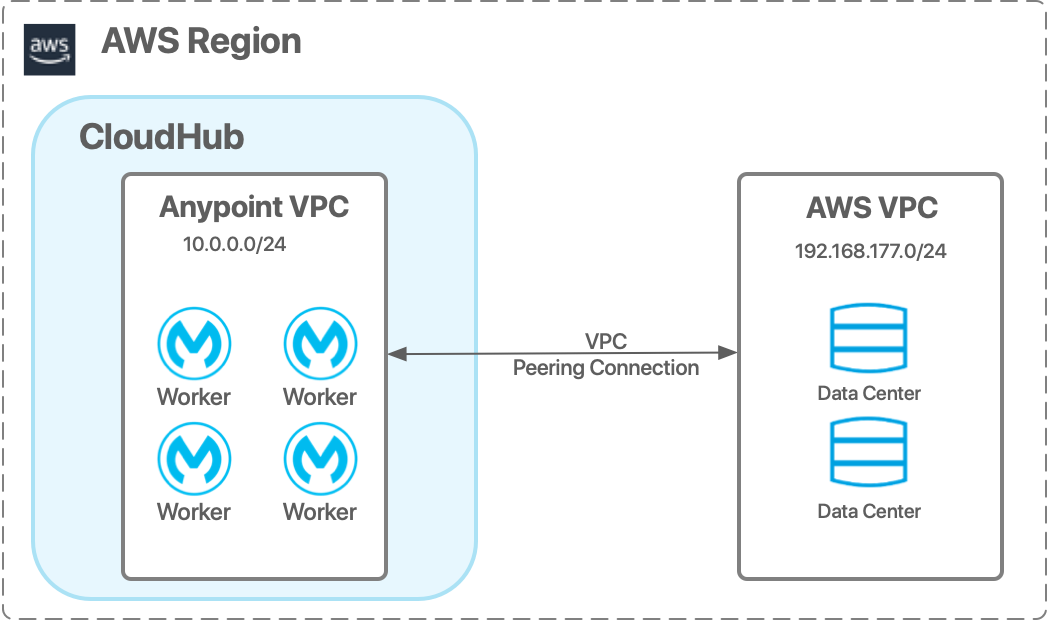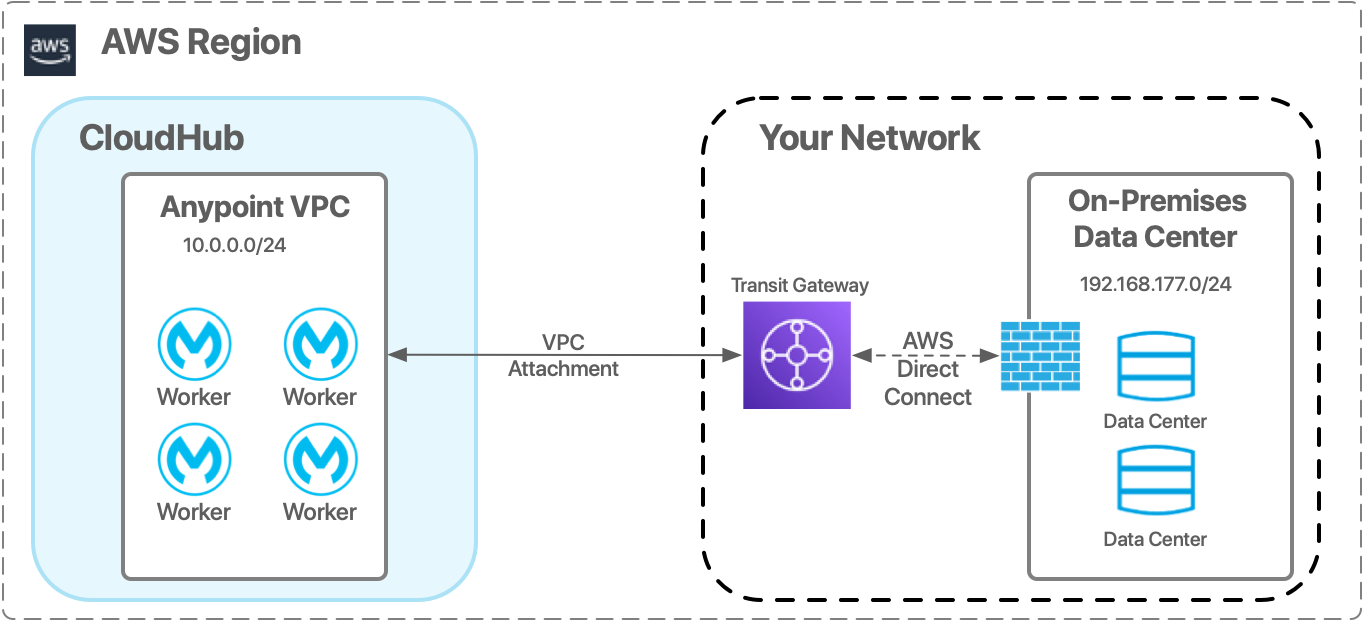
Anypoint VPC Connectivity Methods
You can connect an Anypoint Virtual Private Cloud (Anypoint VPC) to your private network using the following methods:
-
IPsec tunnel
-
Transit gateway attachment
-
VPC peering
To connect your Anypoint VPC using VPC peering, contact your MuleSoft Support representative.
-
AWS Direct Connect
To connect your Anypoint VPC using AWS Direct Connect, contact your MuleSoft Support representative.
| A maximum of 95 route table entries is allowed per VPC, regardless of the number of connections. To avoid exceeding the limit, consolidate networks to the fewest number possible. |
IPsec Tunnel
You can use an IPsec tunnel with network-to-network configuration to connect your on-premises data centers to your Anypoint VPC. An IPsec VPN tunnel is generally the recommended solution for VPC to on-premises connectivity, as it provides a standardized, secure way to connect. This method also integrates well with existing IT infrastructure such as routers and appliances.

| If you are using a legacy VPN, migrate to Anypoint VPN before making changes. |
To create an Anypoint VPN connection to your network, see Anypoint VPN.
Transit Gateway Attachments
AWS Transit Gateway acts as a cloud router in AWS, simplifying network access between VPCs, on-premises data centers, and third-party software, while providing increased visibility and control over the network. Transit gateways effectively merge your organization’s cloud resources and on-premises datacenters into one network topology.
On CloudHub, you can take advantage of this network simplification by securely attaching Anypoint VPC to an AWS Transit Gateway in your AWS account.
To use transit gateway attachments, your Anypoint VPC and AWS transit gateway must be in the same region.

To attach your Anypoint VPC to your transit gateway, see Transit Gateway Attachments.
VPC Peering
VPC peering provides a connection between two VPCs. In this case, it pairs your private Amazon VPC directly to your Anypoint VPC. This enables you to route traffic between the two VPCs so they can communicate as though they are in the same network.

|
To use VPC Peering, your AWS and Anypoint VPCs must be located in the same region. |
AWS Direct Connect
To create a Direct Connect connection to Anypoint VPC, create or leverage an existing AWS Transit Gateway on your AWS account and set up the Direct Connect connection to the Transit Gateway. Then, attach Anypoint VPC to the transit gateway and configure the required routing to enable Anypoint VPC on-premises connectivity.

|
To use Direct Connect, your AWS Direct Connect Partner and the Anypoint VPCs must be located in the same region. Direct Connect gateways are not supported. Direct Connect requires the use of the Border Gateway Protocol (BGP) for dynamic routing. For high availability, use multiple Direct Connect connections from different AWS Direct Connect Locations. |



